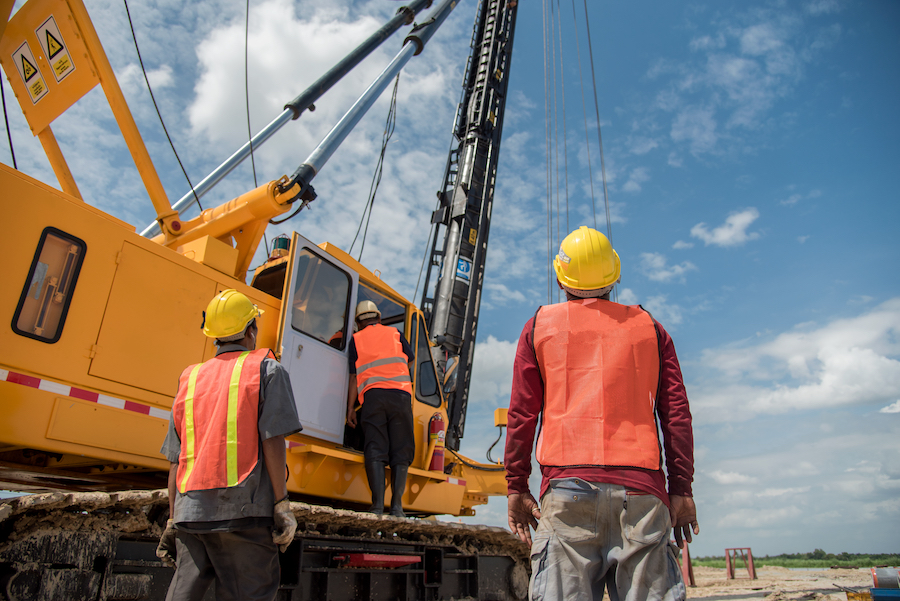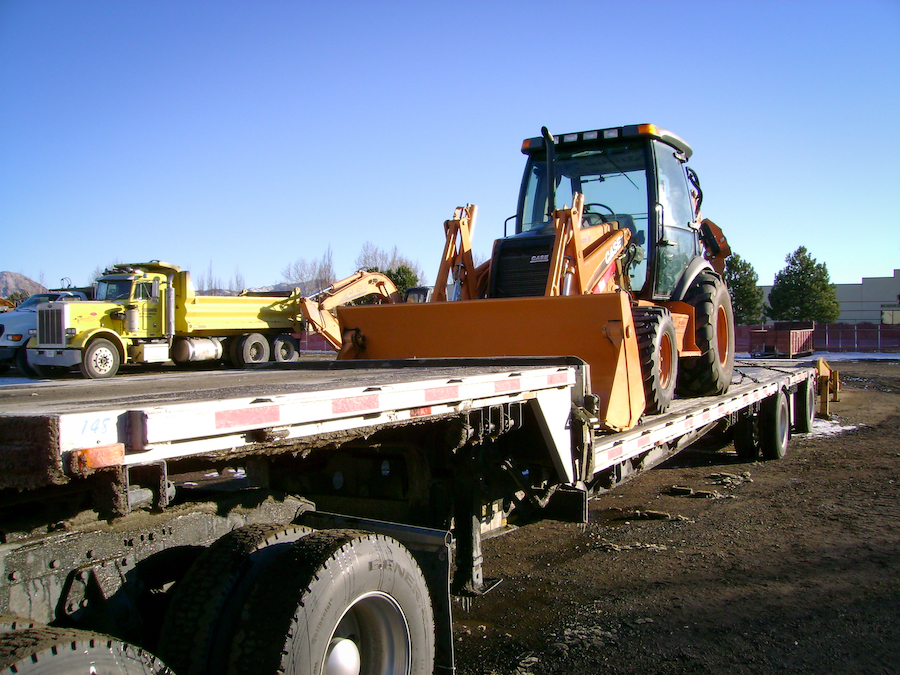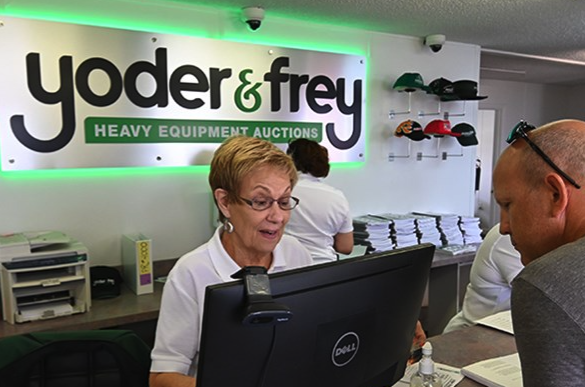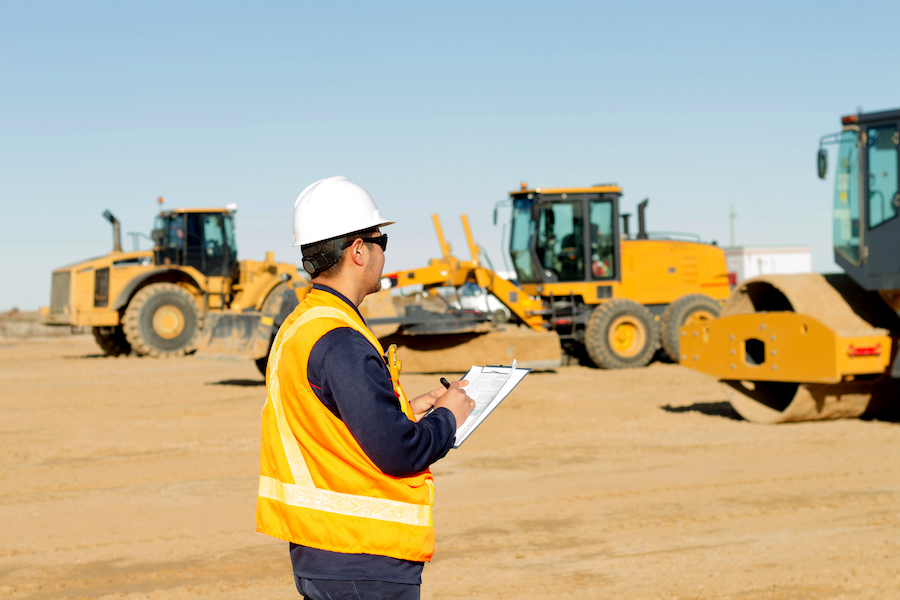
View the complete article here.
Even if you’re an experienced contactor or equipment operator, buying and selling construction equipment at an auction can be intimidating and stressful… but, it can also be exhilarating and rewarding if you do your due-diligence and learn the ins-and-outs of the process.
In this guide, which is split into two parts—the first part for buying and the second part for selling—we’re going to cover the differences between onsite and online auctions, conducting pre-auction research, budgeting and financial preparation, developing a bidding strategy, preparing equipment, catalogue entry, the post-auction process and much more.
Buying Heavy Construction Equipment at Auctions
Onsite Versus Online Auctions
When it comes to heavy construction equipment, the two most common types of auctions available include onsite and online auctions.
Onsite Auctions
Onsite—or live auctions—are the traditional auction format. They’re conducted in person at a specific location and time. At this location, buyers meet face-to-face, and the auction house leads the bidding process in real time.
For heavy construction equipment, onsite auctions offer several significant advantages:
- Physical inspection: Buyers have the opportunity to inspect the equipment in person. This usually happens on inspection days, which are set prior to the auction date. During inspection, buyers can check the equipment’s condition, verify its features and specifications, and sometimes even test it.
- Immediate resolution: When the auctioneer’s hammer falls, the highest bidder wins, and the transaction is immediately binding. This allows for quick decision-making and negotiation on both the buyer’s and seller’s part.
- Networking opportunities: Onsite auctions offer a chance to network with other industry professionals. Buyers can meet sellers and auctioneers—potentially forming relationships that could be beneficial in future transactions.
However, onsite auctions also have some downsides. Participants have to travel to the auction location, which may be inconvenient or costly—especially for international buyers. The auction process can also be fast-paced and stressful—particularly for those unfamiliar with live bidding.
Online Auctions
Online auctions have gained popularity with the rise of digital technology. They offer a convenient alternative to onsite auctions—allowing participants to bid on items remotely through an online platform.
Online auctions offer several advantages for buyers and sellers of heavy construction equipment:
- Convenience: Participants can bid from anywhere in the world, as long as they have an internet connection—eliminating the need for travel and allowing bidders to participate in multiple auctions simultaneously.
- Extended bidding period: Online auctions often last for several days or even weeks—giving bidders ample time to make decisions. Bidders can monitor the auction progress and adjust their bidding strategy as needed.
- Detailed listings: Each piece of equipment is listed with detailed descriptions, specifications, and high-quality images. Some auction houses may also provide condition reports, history reports, or video demonstrations.
However, online auctions do come with certain drawbacks. The lack of physical inspection means bidders must base their decisions solely on the seller’s information, and—although some platforms offer third-party inspection services—these can’t quite replace the certainty of a personal examination. Participants may also grapple with technical difficulties such as slow internet connections—especially problematic during crucial bidding moments. In addition, while uncommon, the risk of fraudulent listings is a reality—making it essential to engage with reputable auction houses to minimize potential fraud.
Both onsite and online auctions have their unique strengths and considerations. Depending on your circumstances, one may suit you better than the other. Always consider factors like the value and condition of the equipment, your geographical location, and your level of auction experience when choosing the type of auction to participate in.

Conducting Pre-Auction Research
Prior to participating in any auction, comprehensive research is essential.
Consider market value research. Use resources such as equipment guides, recent auction results, online marketplaces, and dealer prices to get a feel for the fair market value of the equipment you’re interested in.
Utilize auction catalogues. Auction houses like Yoder & Frey release detailed auction catalogs before each event. These should be studied to identify potential items for bidding—noting their listing details and photographs.
Conduct equipment condition research. During onsite auctions, inspection days allow potential bidders to scrutinize the condition of equipment. For online auctions, inspect high-resolution photos and read the descriptions to understand the equipment’s condition.
Don’t forget that thorough research is the cornerstone of any successful auction experience. By understanding market values, analyzing auction catalogs, and conducting diligent equipment condition assessments, you’ll make a potentially complicated process run as efficiently as possible.
Budgeting and Financial Preparation
Keep in mind that financial preparation goes beyond simply identifying how much you are willing to spend on the purchase price of the equipment. It’s crucial that—while preparing for the auction—you do your financial due-diligence.
To determine a purchase price, begin by identifying the market value of the equipment you are interested in—using resources such as equipment guides, recent auction results, and dealer prices. This will give you a baseline figure, but remember that auction prices can be volatile and may not always reflect fair market values.
In many jurisdictions, sales tax will be added to the final price. The tax rate can vary based on where the auction is taking place and where you plan to register the equipment. For this reason, it’s important to confirm the applicable tax rate ahead of time and account for this in your budget.
If you win a bid, you will be responsible for transportation costs, which have the potential to significantly add to the total cost of ownership. Factors to consider include the distance to your location, the size and weight of the equipment, and whether any special handling is required. It is ideal to obtain quotes from several freight companies ahead of time.
Don’t forget buyer’s premium. An additional charge on the winning bid or equipment price, buyer’s premium is a percentage of the final bid that goes to the auction house as part of their fee. This amount varies by auction house and sometimes by the value of the final bid.
Depending on the condition of the equipment, there may be repairs or refurbishment that need to be made after the purchase. Inspect the equipment (or review the inspection report) carefully to estimate any potential post-purchase costs.
Depending on how and where you will be using the equipment, you may need to factor in the cost of insuring the equipment.
And—of course—there are financing costs. If you plan to finance your equipment purchase, be sure to factor in the cost of interest and any financing fees.
Remember that a comprehensive budget should factor in all these elements—ensuring that you’re fully prepared for the total cost of acquiring, transporting, and potentially refurbishing and insuring your new heavy construction equipment.
Bidding Strategy
Crafting a successful bidding strategy is an integral part of coming out on top in an equipment auction. This strategy involves—not only understanding how auctions work—but also recognizing your own financial constraints and how to react appropriately to bids during a potentially stressful environment.
Understanding incremental bids is crucial. Auctions operate on a system of incremental bids—meaning each new bid must exceed the previous one by a certain amount. This amount is set by the auction house and can vary based on the equipment’s value and the auction format. For example, an auction might have increments of $100 for items under $1,000, but increments of $1,000 for items over $50,000. Before participating in an auction, make sure you understand these increments and are comfortable with them.
You should know your limit. Before the auction, decide on the maximum amount you’re willing to pay for a piece of equipment. This decision should be based on the item’s market value and your budget. Stick to this limit during the auction to avoid overpaying while under pressure. Remember that a bid is a binding contract, and you’ll be expected to pay the amount you bid.
Bidding early and aggressively tends to start a bidding war—driving up the price of the equipment. Instead, be patient and observe the bidding activity. Once the initial flurry of bidding slows down, this is the ideal time to place your bid. However, this strategy requires discipline and focus—as you must be ready to bid before the auction house closes the bidding.
On that note, bid late, but not last. Some bidders try to place the very last bid before the auction house closes the bidding—a strategy known as “sniping”. While this can sometimes secure a win at a lower price, it also risks missing the opportunity to bid if the auction house closes the bidding sooner than expected. A safer strategy is to bid late… but not at the very last moment.
Be flexible—prepared to adjust your strategy based on the competition. If there’s a lot of interest in an item, you may need to bid more aggressively. On the contrary—if interest is low—patience could secure you a lower price.
Keep in mind that a successful bidding strategy requires understanding the auction process, setting a firm budget, exercising patience, and being ready to adapt to the situation. It might take a few auctions to firmly develop a strategy that suits your style and the specific dynamics of heavy equipment auctions, so don’t get discouraged if you don’t win your first few bids.

Post-Auction Process
Securing a winning bid at an auction is an rewarding moment, but it’s just the first part of the process. Once the hammer falls in your favor, there are critical steps you need to follow to finalize your purchase and take possession of your equipment:
- Arrange payment: First and foremost, understand the payment terms outlined by the auction house. Most typically stipulate the acceptable payment methods—as well as the timeframe within which the payment should be made—immediately after the auction or within a few business days. Keep in mind that payment often includes—not just the final bid amount—but also any applicable taxes and the buyer’s premium. Some auction houses may require a deposit at the time of bidding, with the remainder due after winning. Failure to comply with these payment terms could result in penalties or even disqualification from future auctions, so it’s important to have your financing in order and be prepared to make prompt payment.
- Invoice review: After the auction concludes, you’ll receive an invoice summarizing your purchase—including the final bid price, the buyer’s premium, and any taxes or other fees. Be sure to review this invoice carefully to ensure it matches your understanding of the transaction. If there are any discrepancies, promptly report them to the auction house.
- Plan transportation: Transporting heavy construction equipment from the auction site to your location can be a hefty process—involving everything from hiring a freight company to securing necessary permits for transport. It’s ideal to begin this process as soon as you’ve won the bid—as delays in removing the equipment might incur storage fees. Most auction houses can often recommend trusted freight partners to simplify this process. However, it’s ultimately your responsibility to ensure that the equipment is properly insured during transit and that the chosen transporter can handle the type, size, and weight of your equipment.
- Equipment pickup: Once your payment is confirmed and transport is arranged, the auction house will provide instructions for picking up the equipment. This typically involves confirming pickup dates and times, as well as outlining any necessary protocols or requirements for loading and removal. It’s crucial to coordinate with your transport provider to meet these requirements.
- Title transfer: If your purchase involves equipment like trucks or other titled items, there will be additional steps to transfer ownership. The auction house will provide the necessary documentation, which you’ll need to submit to your state’s department of motor vehicles or equivalent agency.
Remember that communication with the auction house, your financial institution, and your freight partner will be key to a smooth transaction.

Selling Heavy Construction Equipment at Auctions
Selecting the Right Auction House
Choosing the ideal auction house is a critical step in selling your heavy construction equipment. Considerations should include the auction house’s experience in selling similar items, the size and demographics of their buyer base, and their reputation in the industry.
You’ll want to work with an auction house that has a proven track record of selling similar equipment. In this case, they’ll understand the value of your equipment, know how to market it effectively, and have a network of potential buyers who are interested in your type of equipment.
Consider the buyer base. The more potential buyers an auction house can reach, the higher the chances of your equipment selling for a good price. Look for an auction house with a large, active buyer base and a solid marketing strategy to attract these buyers to your auction.
A reputable auction house will have transparent processes, professional conduct, and positive feedback from past sellers. Be sure to check online reviews, industry publications, and ask for references to gauge the auction house’s reputation.
Catalogue Entry
Once you’ve selected an auction house, the next step is to create a compelling catalogue entry for your equipment. This is your opportunity to showcase your item and attract potential buyers.
Provide a comprehensive description of your equipment—including the make, model, year, hours/mileage, and condition. Also, highlight any special features or upgrades, and be upfront about any known defects or issues. Honesty is crucial here. Disclosing the equipment’s true condition builds trust with buyers and can help avoid disputes after the sale.
These days, high-quality photos are essential and can significantly impact a buyer’s decision. Be sure to capture your equipment from multiple angles and in good lighting conditions. Show any important features—as well as areas of wear or damage. If possible, include pictures of the equipment in operation as well. This can help buyers visualize how the equipment works and confirm it’s in good working order.
If available, include supporting documents like service records, manuals, and warranties. This can demonstrate that the equipment has been well-maintained and give buyers confidence in their purchase.
Creating a compelling catalogue entry requires time and attention to detail, but it’s well worth the effort. A strong entry can attract more potential buyers, encourage competitive bidding, and—ultimately—help you achieve a higher sale price for your equipment.

Setting the Reserve Price
Establishing an appropriate reserve price is a balancing act that involves understanding market trends, evaluating the condition of your equipment, and being aware of demand levels.
Market research is important. Assess the current market values for similar equipment to establish a realistic reserve price. Look at recent auction results, dealer pricing, and online listings to gauge an average price for comparable items.
Your machine’s condition significantly impacts its value. Better-maintained equipment with lower operating hours can justifiably demand a higher reserve price. Consider all aspects—from operational status to cosmetic condition—when setting your price.
If your equipment type is in high demand or rare, you might be able to set a higher reserve. If the market is flooded with similar items, a lower reserve might be more appealing to bidders.
Remember that the reserve price serves as your safety net, so it’s essential to set it based on comprehensive research and realistic expectations.
Presentation and Inspection
The presentation of your equipment can significantly influence buyers’ perception and—ultimately—the bids you attract. A well-presented, fully operational piece of equipment is far more likely to fetch a higher price than one that looks neglected or runs poorly.
First impressions are crucial. Begin by thoroughly cleaning your equipment. This involves removing dirt, grease, and grime from all parts of the machine. And, don’t forget the interior— a clean, clutter-free cab gives the impression of a well-maintained machine. Also, consider simple touch-ups to improve the cosmetic appearance—like painting over minor scratches, replacing worn seat covers, or polishing metal surfaces.
Don’t neglect minor repairs. Small functional issues—while might seem trivial—can leave a negative impression on potential buyers. Address any minor repairs before the auction to ensure the equipment is in good working order. Fix leaks, replace worn-out parts, ensure all lights and indicators are working, and repair or replace damaged seals or gaskets.
Be inspection-ready. In some cases, potential buyers may want to inspect the equipment in the form of an in-person visit or a virtual tour. Arrange it in a well-lit area where its features and condition can be easily observed. Also, be prepared to demonstrate its operation—buyers often gain confidence when they see a piece of equipment in action.
Remember, the goal is to make your equipment as attractive as possible to potential buyers. A well-cleaned, fully functional machine that is ready for inspection demonstrates to buyers that it’s worth their investment.

Post-Auction Process
Once your equipment sells at auction, there are a few important steps to ensure a smooth transaction and transfer of ownership. The procedures may vary depending on the auction house, but here are some general guidelines to consider:
- Payment process: After the successful sale of your equipment, the auction house will manage the payment process. They will collect payment from the buyer, deduct any agreed-upon fees, and then distribute the remaining funds to you. It’s important to understand the auction house’s specific payment terms prior to the auction—including when and how you can expect to receive your funds.
- Pickup protocol: Once payment has been settled, the equipment will need to be transferred to the buyer. The auction house will specify a pickup protocol for sold items—including the timeframe in which the buyer must collect the equipment and any requirements or guidelines for the pickup process.
- Documentation transfer: The auction house will also guide you through the process of transferring ownership documents. This may include transferring the title, service records, or any other relevant paperwork.
In general, the post-sale process requires close communication with the auction house. Their guidance will help you navigate payment collection, pickup arrangements, and paperwork transfer—ensuring a successful end to your auction experience.
Conclusion
Whether buying or selling heavy construction equipment, auctions provide a platform for great deals, variety, and opportunities for both sides of the transaction.
By doing thorough research, preparing meticulously, understanding market dynamics, and aligning with reputable auction houses, you can make informed and strategic decisions.
While the process can seem overwhelming, navigating auctions with the right knowledge and preparation can lead to excellent deals on construction equipment.
We recommend Yoder & Frey. Yoder & Frey is a trusted and reputable heavy equipment auction—offering a seamless and efficient buying and selling experience. With a vast selection of equipment, transparent operations, and a vast network of global buyers, Yoder & Frey provides unmatched opportunities for contractors and equipment owners to maximize their investments.
View the complete article here.
What are the advantages of participating in an online heavy construction equipment auction?
Online auctions offer convenience, extended bidding periods, and detailed equipment listings, allowing participants to bid remotely from anywhere and make informed decisions.
How do I determine the reserve price when selling heavy construction equipment at an auction?
To set the reserve price, conduct market research, assess the equipment's condition, consider demand levels, and establish a realistic price based on comprehensive research and expectations.













































